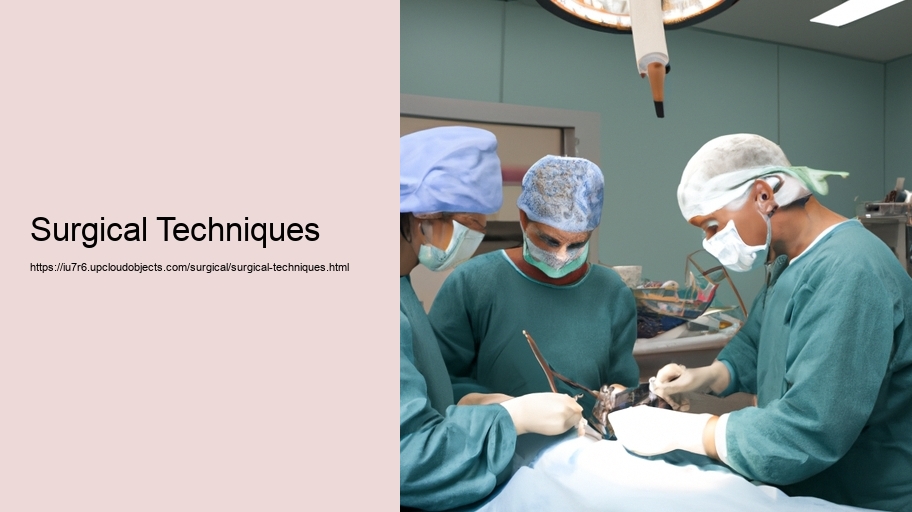Surgical Techniques: An Essay on the Evolution and Artistry of Healing
Surgical techniques have come a long way since the days of crude trepanation in ancient civilizations and the barber-surgeons of medieval Europe. They have evolved from the tentative probing of the human body to an elaborate art form that combines knowledge, skill, precision, and technology to heal and extend lives.
In the earliest days, surgery was often synonymous with pain and a high risk of infection. Without anesthesia, antiseptics, or the understanding of germ theory, the prospect of undergoing surgery was daunting. The Hippocratic Oath, an ancient Greek medical text, suggested that physicians should refrain from "cutting for the stone" (removing bladder stones) and leave such practices to specialized craftsmen who possessed the boldness and equipment to execute the procedure. This delineation between physician and surgeon would persist for centuries, with surgery long considered a manual labor rather than a scientific endeavor.
As the Renaissance blossomed, so did the understanding of human anatomy, largely due to the work of pioneering anatomists like Andreas Vesalius. His meticulous dissections and detailed drawings brought a new level of understanding to the human body, which in turn laid the foundation for more sophisticated surgical techniques. Despite this progress, patients still suffered greatly from the lack of pain control and postoperative infections.
The 19th century marked a turning point with two pivotal discoveries: anesthesia and antisepsis. The use of ether and later chloroform as anesthetics transformed surgery from a brutal, fast-paced race against pain to a more deliberate and meticulous practice. This newfound ability to perform pain-free operations opened the door to surgeries that were previously unimaginable. Antisepsis, propelled by the work of Joseph Lister, who championed the use of carbolic acid to sterilize surgical instruments and clean wounds, dramatically reduced the rate of infections and made surgery safer.
The 20th century brought with it further refinements. The discovery of antibiotics provided another layer of defense against postoperative infections, while advances in blood transfusion and the development of new surgical tools expanded the horizon even further. Specialization became the norm, with surgeons focusing on specific areas of the body and conditions, allowing for greater depth of knowledge and skill in each domain.
The latter half of the century saw the advent of minimally invasive techniques, such as laparoscopic surgery, which enabled surgeons to perform complex procedures through small incisions with the aid of video cameras and specialized instruments. This approach reduced pain, scarring, and recovery times, revolutionizing the patient experience.
Entering the 21st century, we find ourselves in the digital age of surgery. Robotic surgery systems, such as the da Vinci Surgical System, allow for even greater precision and control, with surgeons manipulating robotic arms to perform delicate tasks. Computer navigation, 3D printing, and virtual reality are becoming integral components of surgical planning and execution. These technologies, along with advances in surgical technique, have made operations that were once deemed impossible routine.
Despite these technological advancements, surgery remains an art as much as a science. It calls for a blend of knowledge, dexterity, and decision-making that comes from years of training and experience. The surgeon's hands are instruments of healing, guided by a compassionate understanding of the patient's needs and an unwavering commitment to their well-being.
In conclusion, the journey of surgical techniques is a testament to humanity's enduring quest to understand and mend itself. From the earliest incisions made with flint tools to the precise movements of a robotic arm, surgery reflects our greatest aspirations: to push the boundaries of what is possible and to alleviate suffering. As we look to the future, we anticipate further innovations that will continue to shape this ever-evolving field, always with the aim of improving the human condition.
